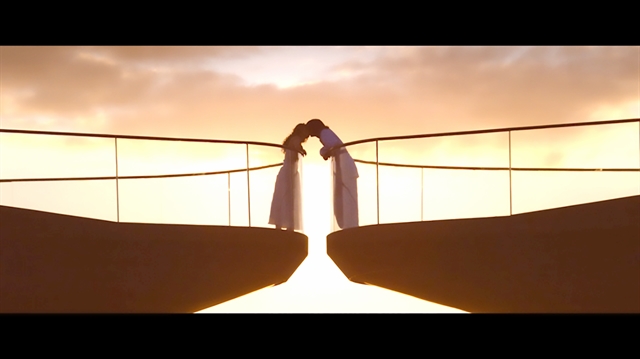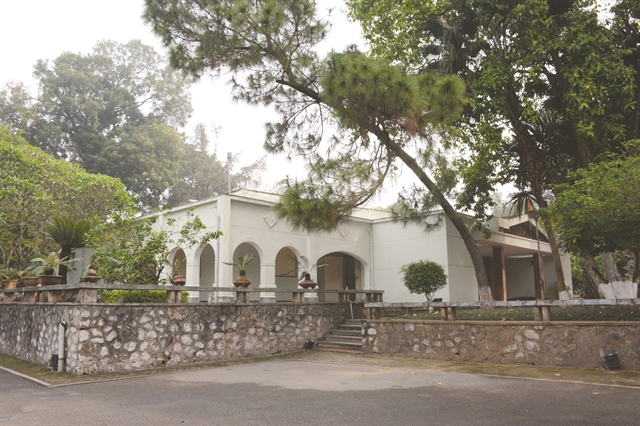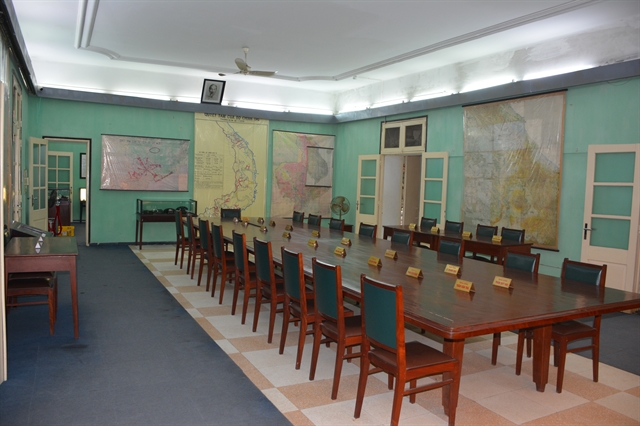 Life & Style
Life & Style

No matter where you are, now you can understand clearly about the national resistance against the US in 1975, the liberation of the South and the national unification thanks to a virtual exhibition provided by the Thăng Long – Hà Nội Heritage Conservation Centre.

|
| The outside of the House D67, General Headquarters of Vietnamese People’s Army. Photo courtesy of the Thăng Long – Hà Nội Heritage Conservation Centre |
HÀ NỘI No matter where you are, now you can learn more about the national resistance against the US, the liberation of the South in 1975 and the national reunification thanks to a virtual exhibition provided by the Thăng Long – Hà Nội Heritage Conservation Centre.
With the title Activeness – Bravery – Unpredictability – Victory, the exhibition offers a panoramic view of the Hồ Chí Minh Campaign and the lead up to national liberation.
It’s one among various activities to mark the 45th anniversary of Liberation and Reunification Day (April 30). Due to the pandemic, the exhibition is presented online in Vietnamese and English at https://TrungBayOnline.HoangThanhThangLong.vn.
“The exhibition is intended to affirm the role of the General Headquarters (House D67) in the liberation of the South, to revive the spirit of the Party, army and people during the time when the entire nation fought for its reunification and evoke the patriotism of the people and soldiers,” said Trần Việt Anh, director of the Thăng Long – Hà Nội Heritage Conservation Centre.
The exhibition is divided into different parts including the Paris Peace Accord, the Spring 1975 General Offensive and Uprising, the Main Events and the Happiness at the Victory.
“With information, photos and documentaries, the exhibition shows excellent leadership of the Political Bureau and the Central Military Commission through strategic directions in combat and great vision to be able to seize the opportunity to liberate the South,” Anh said.
Visitors will understand more about the Hồ Chí Minh Campaign’s development through the battle in the Central Highlands as well as the successive defeats in Huế, Đà Nẵng and the central coastal region, followed by the attacks to liberate the islands of Trường Sa (Spratly) Archipelago and the islands in the East Sea.
At 11.30am, April 30, 1975, the liberation flag flew from the roof-top of the Independence Palace in Sài Gòn, which gave a signal of the complete victory of the Hồ Chí Minh Campaign, the last campaign of the Spring 1975 General Offensive and Uprising.
The heritage conservation centre has developed a virtual tour to the General Headquarters of the Việt Nam People’s Army (House D67) from 1968 to 1975, which is a part of the Imperial Citadel of Thăng Long – a world cultural heritage site.
The landmark that was constructed by the army in 1967 had a great significance to the nation’s struggles.
House D67 consists of a conference room in which officers of the Political Bureau and the Central Military Commission of the Party Central Committee worked, offices of leaders of the Việt Nam People’s Army – General Võ Nguyên Giáp and General Văn Tiến Dũng – and many maps and documents relating to the Hồ Chí Minh Campaign.

|
| The conference room inside House D67 where important decisions were made. Photo courtesy of the Thăng Long – Hà Nội Heritage Conservation Centre |
By following the link above, visitors will enter House D67 and Shelter D67 which is 9m underground. The shelter consists of a big conference room, an operation watchroom and a small room in which a system of ventilation and poison prevention was installed.
For tourists at the site, they can scan QR Code to have a better understanding of the House and Shelter D67 as well as important objects.
To mark the victory, the heritage conservation centre will co-ordinate with Omega Plus Company to launch a bilingual book entitled Headquarters D67: Evidence of Hồ Chí Minh Era.
The 150-page book will provide valuable information of the House and Shelter D67 where important policies, strategies and decisions were made.
The photo book contains precious photos and documents; excerpts from memoirs of generals like Võ Nguyên Giáp, Văn Tiến Dũng and Hoàng Văn Thái; and stories of other historical witnesses.
“The publication helps preserve the heritage, popularise its value and provide historical knowledge for local and foreign readers,” said director Anh.
“We hope the new approach will lure visitors to the site for real experiences after the pandemic.” VNS




